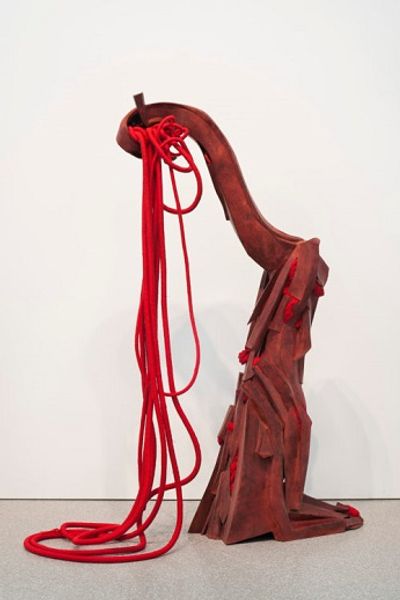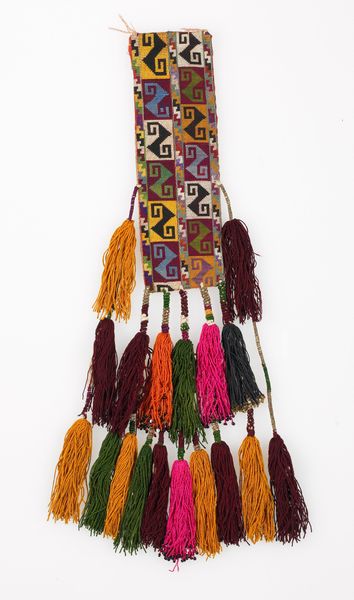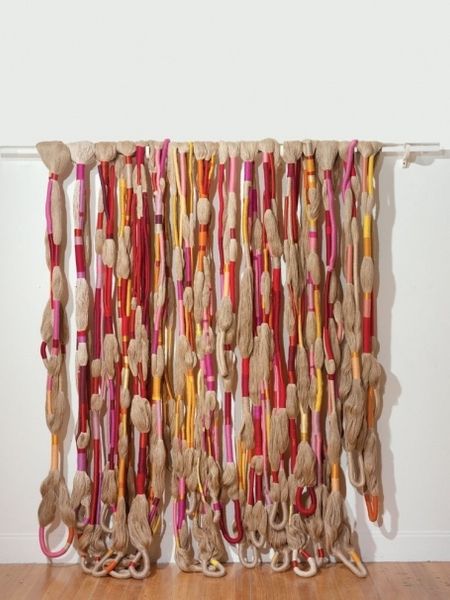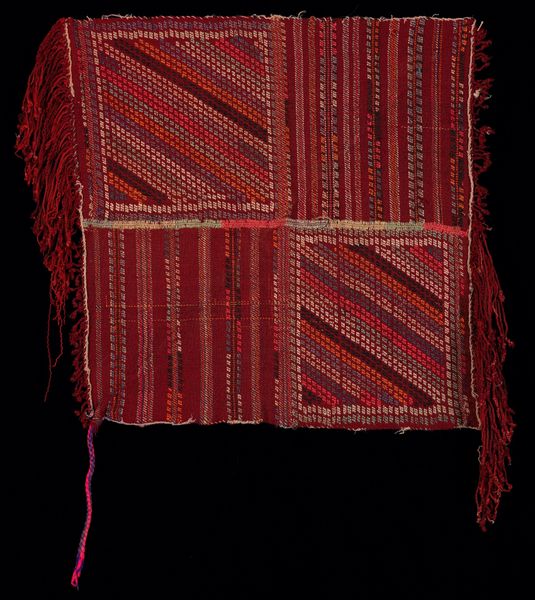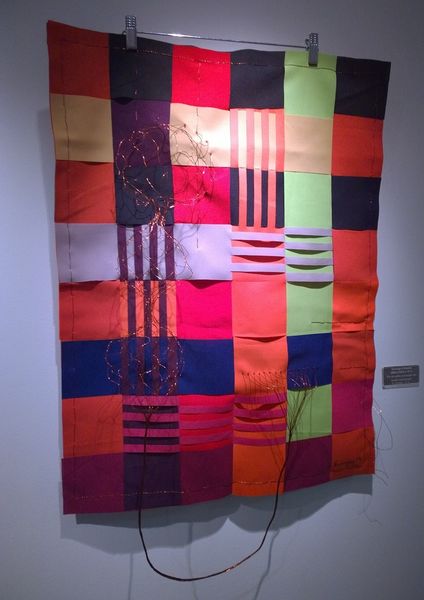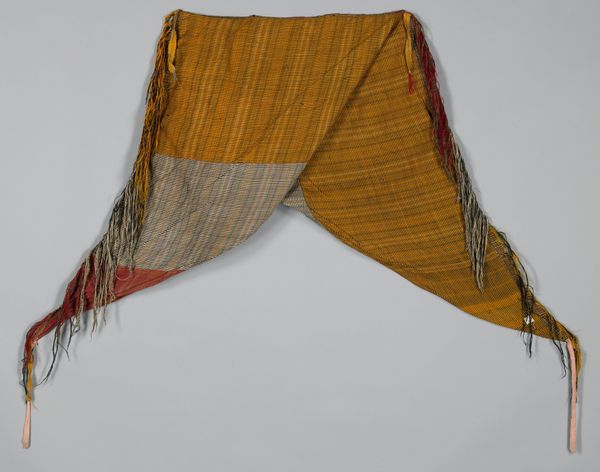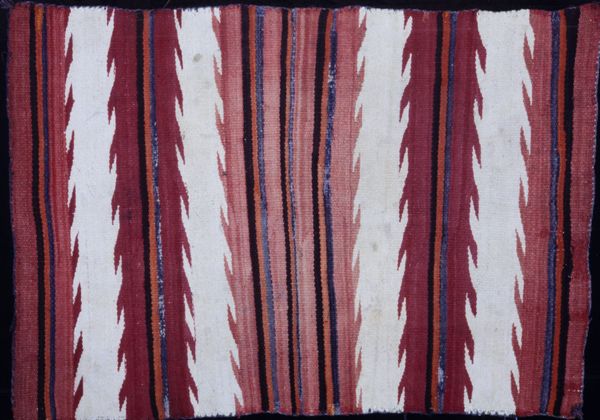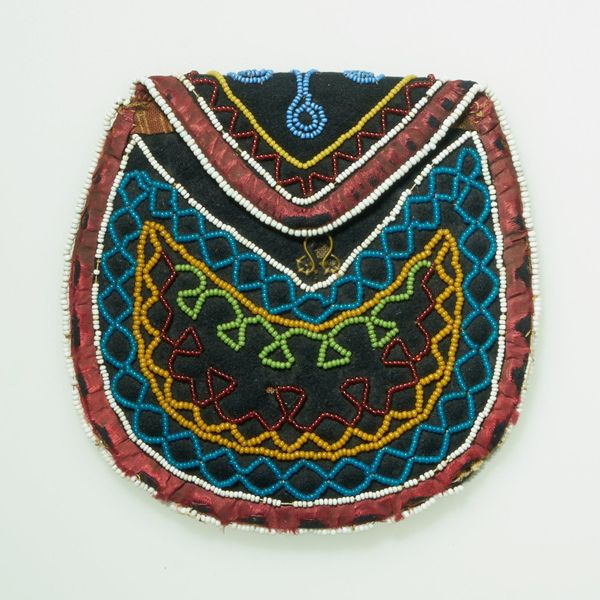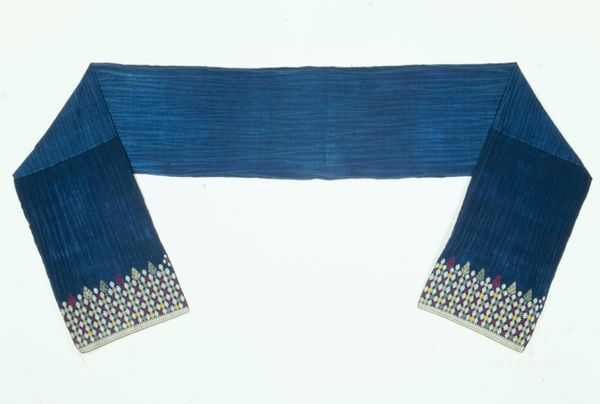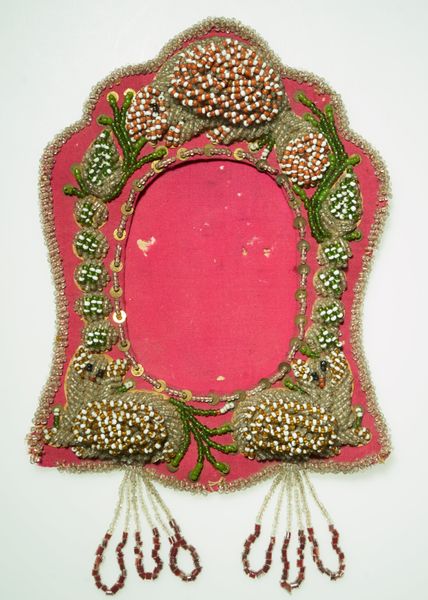
fibre-art, textile, cotton
#
african-art
#
fibre-art
#
textile
#
geometric
#
naive art
#
cotton
Dimensions: 44 3/4 x 26 1/2 in. (113.67 x 67.31 cm) (flattened)
Copyright: Public Domain
This 'Man's Corset' was likely constructed in the late 20th century by an artist from the Dinka culture of South Sudan. Garments like these were historically worn by men, especially during ceremonies and dances. Considered through a contemporary lens, this piece challenges conventional ideas about gender. The term "corset" typically evokes images of Western femininity and restriction, yet here it is reimagined within the context of Dinka masculinity. The materials, including beads and fibers, suggest an intimate connection to the land and to cultural heritage. Note the deep reds and blues, colors with symbolic significance that reflect the importance of cattle and the sky in Dinka cosmology. This piece also highlights the complexities of cultural exchange and appropriation. When displayed in a museum setting, the corset prompts us to think about how cultural artifacts are interpreted and valued outside of their original context. The corset serves as a powerful reminder of the diversity of human expression.
Comments
minneapolisinstituteofart almost 2 years ago
⋮
Dinka men used to dress lightly—until recently, they simply covered their torsos in tight, beaded corsets, highlighting their lithe figures. But these garments did more than that: the colors of the beads signal social and marital status as well as the wearer’s age. Red and black means a young man between 15 and 25 years old.
Join the conversation
Join millions of artists and users on Artera today and experience the ultimate creative platform.
